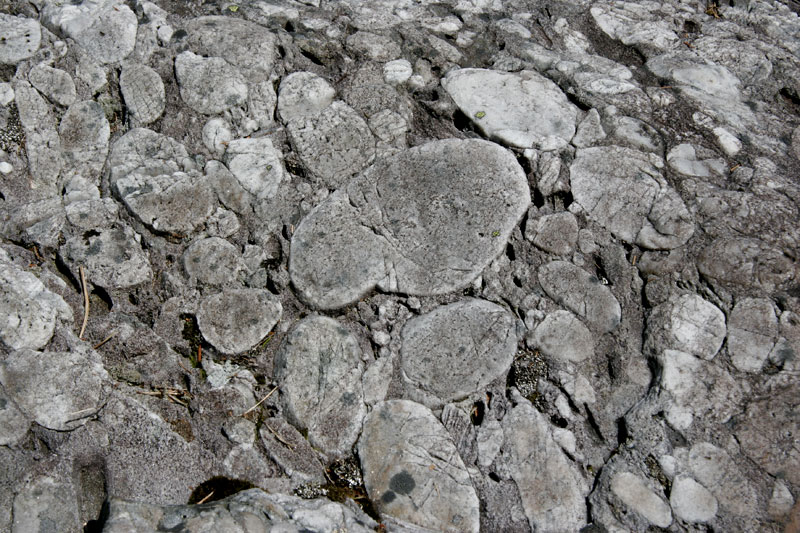Relics and stone
At Søre Neset in the southwest there are a great number of relics to the past, particularly in the area around Vargavågen. Here you will find burial mounds, rock carvings dating back to 4000 BC and soapstone quarries, and the characteristic Vargahola, a cave where soapstone was mined during the Middle Ages or even as early as the Viking Era. A cultural-historical trail guides you past the different attractions. Another important relic at Os is the large soapstone quarry at Steinkulo, not far from Lysekloster monastery, and the burial mounds at Hauge, with the royal burial mound as a natural centre. Directions to Vargahola and Vargavågen: Drive toward Halhjem, take the exit to Lekven and drive toward Nedre Lekven and Ferstad. Park in front of the barrier and enter via the marked pathway.
The Ulven conglomerate
The ground rock in the district of Os mainly originates from ancient times (the Palaeozoic era) and settled into its current position and structure during the folding of the Caledonian Range which took place in the Silurian era (444-416 million years ago). As this mountain range folded, the ancient ocean (the Iapetus Ocean) which was once found between Greenland/North America and Norway, shrunk as a result of continental drift, and disappeared entirely when the continental plates collided. As a result of this collision, a number of different types of rock were propelled onto the Norwegian bedrock from the north west. These contained fragments of seabed crust, sediment deposited in deep water and sediment deposited along the coast of the Iapetus Ocean. The shallow water/coastal sediment is now sandstone and, in places, conglomerate. The conglomerate found in the Ulven area just outside of Os is thought to be the remains of these coastal deposits. The layer of conglomerate was originally deposited as an almost horizontal layer, but in many places has been turned vertically due to Caledonian folding. The conglomerate is dominated by boulders which vary in diameter from approx. 1 cm to 10 cm. The boulders are mainly quartzite but also serpentinite, metasandstone and marble. The boulders were originally round as a result of the mechanical impact of depositing (running water/ waves), while the more rectangular shaped boulders were formed as a result of later (Caledonian) impact.

